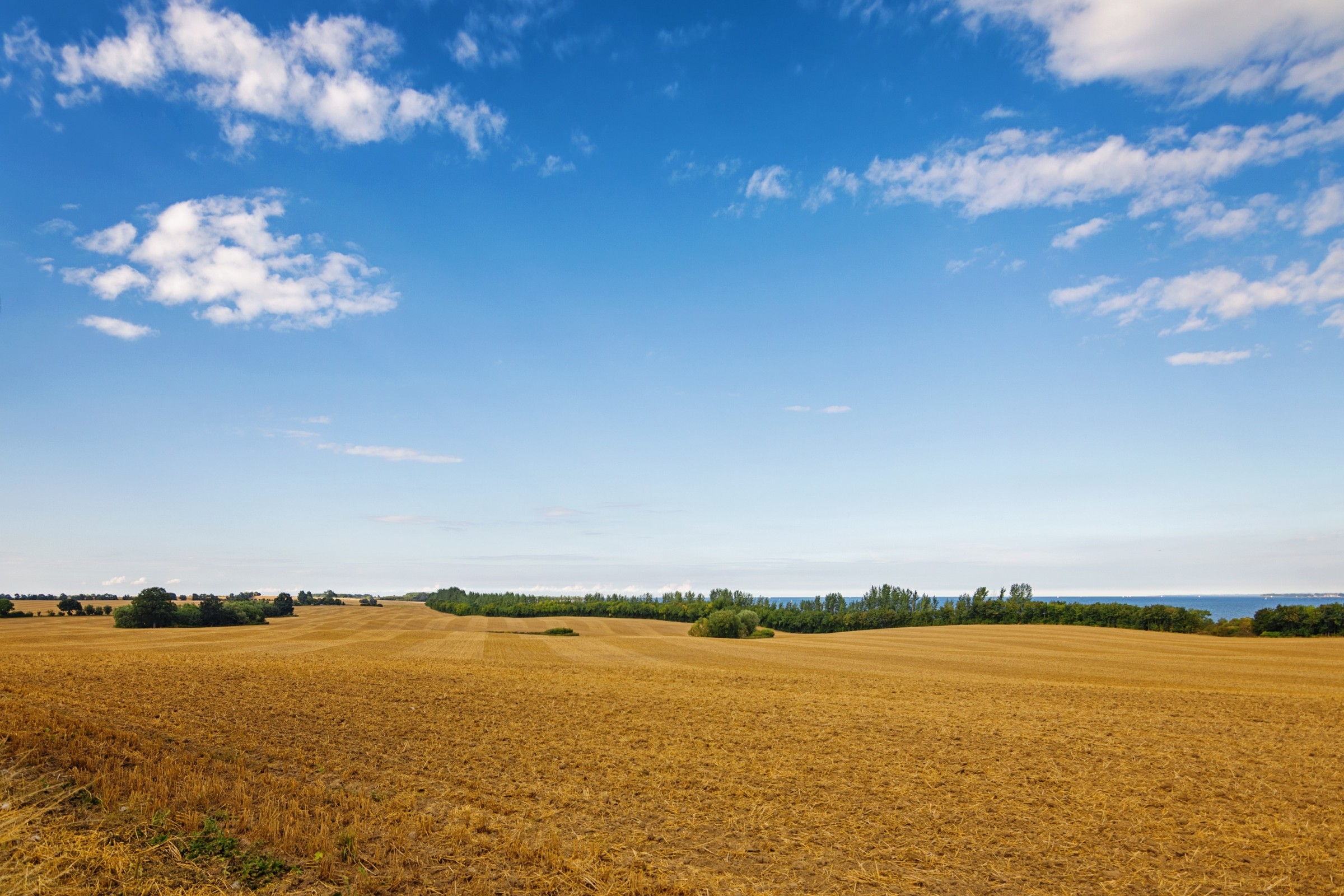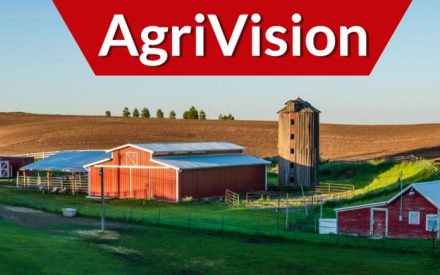https://soundcloud.com/agrivision-extension/agrivision-episode-17-there-are-pluses-to-buying-forages
Host Katie Wantoch and Richard Halopka, Extension crops and soils educator in Clark County, discuss buying forages and calculating feed inventory for future needs.
View Transcript
This is UW Extension’s Farm Management AgriVision Podcast. I am Katie Wantoch Agriculture agent with the UW-Madison Division of Extension. I’ll be chatting with fellow Extension educators as we answer questions from farmers and share our knowledge and expertise on how you can improve your farm management skills. Today I am joined by Richard Halopka, Extension crops and soils educator in Clark County. Welcome Richard to the podcast.
Richard Halopka
Well, thank you, Katie.
Katie Wantoch
Richard, today our question centers around buying forages. A farmer and his son milk 250 cows and farm 275 acres in southwestern Wisconsin. They added a few cows this year, and were hoping to rent 75 to 100 acres of land. They have talked to a neighbor who feeds out beef cattle and raises a lot of corn silage and haylage, which he sells to area farmers. And it seems like what he is asking for silage and haylage per ton is more reasonable than renting more land. The farmer says that they wouldn’t to have to buy more or bigger equipment, or hire more help and the feed is very high quality. Fortunately, they have extra feed from last year. But now they have to decide what to do. Richard, do you have any suggestions for this farmer and his son?
Richard Halopka
This is something where we really need to sit down and get the calculator out and a pen and a piece of paper. If they can produce the quality of the feed coming into their operation that’ll match you know what they’re feeding that dairy cow or maintenance diet on some heifers or something. If they can buy that feed at a reasonable price, it may be a better deal, because you’re giving up risk. That’s the biggest challenge you got here. You know, if you go out and rent the land, well now, what happens if we have 2019 and we can’t get in the field till mid June? Where here the risk, it comes off of your back and the other guy takes the risk on and you’re just buying a finished product. Some guidelines I would recommend is that, hey, when that forage is coming in to the storage, you maybe want to give that producer that’s producing the forage for you some guidelines. Hey, on my haylage, I’m going to be feeding a group of dairy cows. You know, our goal is X number of pounds of milk in our TMR and we need haylage at relative feed value of 170 coming out of storage. You know and that way, that producer that’s producing the forage knows that, hey, by the 20, you know, 20, 25th of May, I’m probably going to have to be harvesting that forage in order to get that relative feed value coming out of storage at that level. But that way, you’ve got some guarantees in place. And you can also adjust that price per ton of forage relative to that analysis that you’re going to get onto that feed value.
Katie Wantoch
The one thing that really concerns me in this question, Richard, is that they don’t have a great idea about how much feed inventory they have, or what they have left? Do you have suggestions for them on how to calculate feed inventory by chance?
Richard Halopka
There are a lot of resources out there, you know, and I know there’s articles out there in fact sheets to help you go step by step through it. So the first thing I would do and don’t wait till you know you’re in the last, you throw the last bale out of the hay mound. Before you decide to do a budget, how much feed you’re going to need to purchase. You know, I would recommend you look at a dairy cow and a dairy cow, and even your heifers and calves right on down the line they’re going to eat about, I would use a number about 2% of their body weight in forages on a dry matter basis. Well now you can, now that we know this, you know if you had 1000 pound animal, it’s going to eat about 20 pounds of dry matter per day. Well now if that’s 50% haylage that becomes 40 pounds. So I mean it’s an easy calculation or dry hay, you can do the calculation from there. And so it’s very important to sit down and do that inventory. I’ve got a 20 by 70 silo out here, I’ve got a bunker that’s 100 by 300, or a bag that’s 10 by 200. We know about how many tons fit in this storage and we can measure that. And then we can understand a little bit better. Hey, I’ve got this many cows, they’re going to need this much forage, I’m going to come up you know 100 or 200 tonne chart, you know on that it’s got to be able to put that budget together and then we can start working on what’s this going to cost us and you know and then you can make that next decision. Is it a viable option to go out and purchase this feed? Well okay I can go and buy Western alfalfa for this much a ton delivered into the farm or I can, hey, farmer Joe down the street’s got bunker standing there and he would like to sell some corn silage out of it. But I mean these are all options you can consider at that time. And we do has some pricing out here that we can work off of, the Hay Market Report for on your forages. And you know the price of corn is another guideline we can also use then you know to price corn silages and some other forages.
Katie Wantoch
Right and going back to your point, don’t wait until you’re throwing the last bale of hay out. Because then you’re kind of at the whim of trying to find something and do it when you have an idea of, you’re going to be short in the future. Let’s take a look and see, you’re able to work on that price. Maybe structuring out some different tax payments to help offset splitting up the year paying a part now and waiting till winter to pick up depending on you know, if it’s hay bales or something like that. Yeah, certainly looking ahead and budgeting payment plans, all things to negotiate if you’re in the right position for it, if you know ahead of time.
Richard Halopka
Yeah, I’ve had that phone call where it becomes desperation. Now we’re desperate, you know, you’re at the whim of, hey, I need something in the next two days. And now you’re going to go to a local auction, or you’re going to go to a local farmer to tide you over. Well, you’re probably going to pay a premium. Even though the hay may be less expensive. The quality may be such that you’re actually paying a premium, because you’re going to have to adjust those rations. If we got a month, two months, even three months out, it’s much easier. And the other thing is when you look at the hay market, the hay market in general, when should you be buying hay? Well, the best time to buy hay is probably as it’s coming off the field. Now, that’s tough unless I know that I’m going to be short. I can, you know, do some pre-buying in June or second crop time, or even that third crop option and bring some of that feed onto the farm if I have storage available. The other option, as you mentioned, you can go out and maybe we could contract. We decide we’re going to buy Western alfalfa. Well, they offer contracts. You could contract with somebody at a supplier in another state, Minnesota, South Dakota, Iowa. It all depends upon how far you want to drive. And then with that contract, you’re locked into a price. I know that if I’m producing milk, and the price of my hay is this, I can produce milk and I can be profitable.
Katie Wantoch
Planning and thinking about it ahead of time really puts you in the driver’s seat of those decisions. All right, well, thanks, Richard for your time today.
Richard Halopka
You betcha.
Katie Wantoch
For more extension Agrivision, podcasts or resources to improve your farm management skills, check out farms.extension.wisc.edu. Thanks for listening.
Related Resources
Information in this article was originally published as part of the Agrivision column in Wisconsin Agriculturist.
Extension resources


 AgriVision Episode 16 – Timing farming retirement
AgriVision Episode 16 – Timing farming retirement


